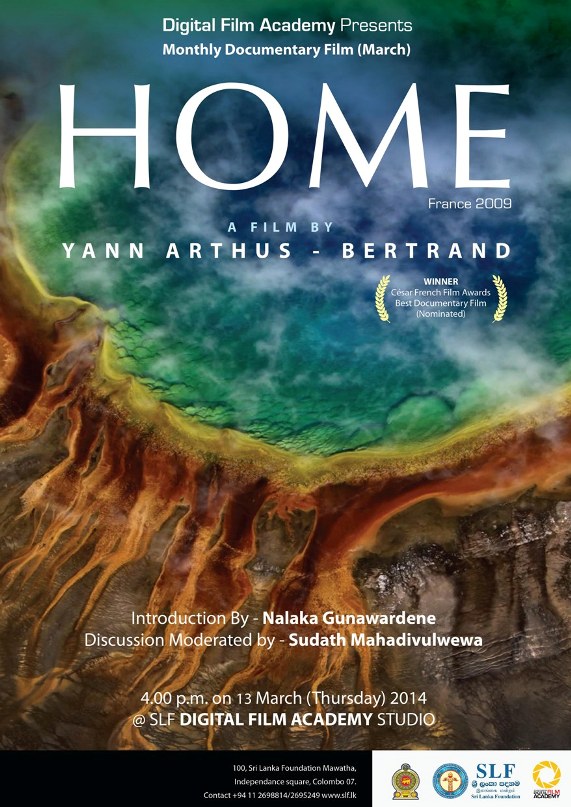I just took part in a public screening of HOME, the 2009 documentary that offers a new view of our planet — from slightly above.
French photographer, journalist and activist Yann Arthus-Bertrand and his team travelled around the planet over 18 months to make this film. They filmed interesting natural and human-made locations in 50 countries — all from the air. This offers a different perspective to our growing impact on the planet’s natural processes and balances.
Technically outstanding and aesthetically enjoyable as it is, does HOME overstate the case for planet-saving action? Or does it gloss over deep-rooted causes of today’s ecological crisis? These and other questions were raised and discussed at our screening.

I was encouraged by over 60 people turning up – a mix of students, professionals, retirees and others – and staying transfixed for the two full hours – plus another 45 mins of Q&A. This is just a summary of wide ranging discussion moderated by filmmaker and film buff Sudath Mahadivulwewa.
We discussed both style and substance. I personally dislike the patronising narration by actress Glenn Close – who reminds me of an all-knowing old matron. But a few felt that this theme demanded just such a voice and delivery.
We agreed that HOME isn’t a typical natural history or environmental documentary. Its scope is vast (story of our planet and human civilisation), its vantage viewpoint extraordinary.

With all its stunning views and haunting music, HOME projects a strong message of anthropocentrism – that human beings are the central or most significant species on the planet (at least in terms of impact). This is now a dominant view among scientists who study the planet (hence the new name for our times, Anthropocene).
I sometimes wonder – as did some in my audience – whether we take too much credit for our signature on the planet. We sure are the most damaging species, but I worry about environmentalism turning into a religion-like dogma. I have always stayed clear of ‘Mother Earth’ kind of romanticising – we don’t need to turn the planet into a gigantic matriarchy to be motivated to care for it!
Besides, some geological processes — such as volcanic eruptions, earthquakes and tsunamis — are not triggered by human action. When I hear die-hard greens trying to link these phenomena to humanity (never mind the absence of any evidence), I consider it environmental advocacy going crazy.
I also drew my audience’s attention to Alan Weisman’s 2007 best-seller The World Without Us, which offers an original approach to questions of humanity’s impact on the planet: he envisions our Earth, but without us. We may be a formidable presence right now, but if we disappear, the planet would slowly but surely reassert itself…
See also my June 2013 Ravaya column (in Sinhala): සිවුමංසල කොලූගැටයා #120: මිහිතල මෑණියෝ ද? මිහිතල අම්මණ්ඩි ද?
Is HOME political enough? Some argued the film left too much for individual thought and action when, in fact, much of today’s resource crises and environmental problems stem from structural anomalies and deeply political disparities in the world. Is this an attempt to absolve the governments and corporations of responsibility and heap it all on individuals?
Opinion was divided, but it got us talking – and thinking. I don’t know Yann Arthus-Bertrand, but perhaps he kept the message at personal level so his film can be non-threatening and benignly subversive? There are times when harsh delivery can alienate part of the intended audience.
All considered, an evening well spent. As I’d tweeted in advance, we had a slightly out of this world experience with Arthur-Bertrand as our guide – and no reality altering substances. Indeed, the stark reality facing humanity can be very sobering…
HOME: How aerial filming was done
Watch the entire film (120 mins) on YouTube: